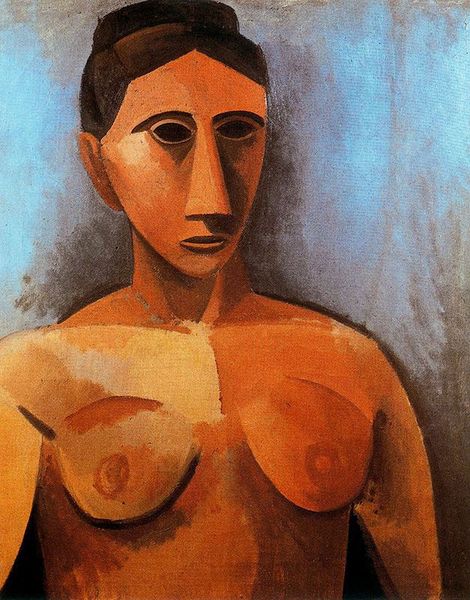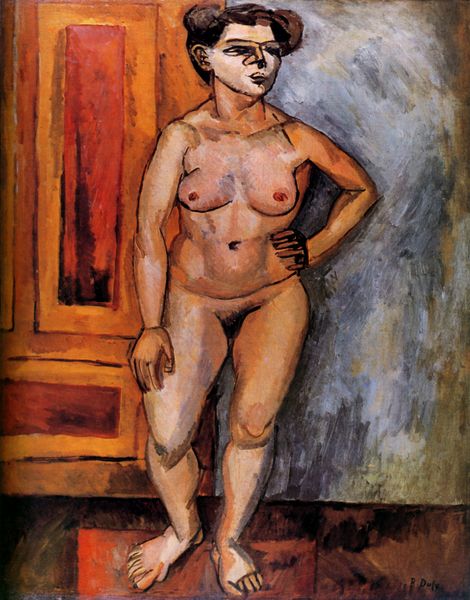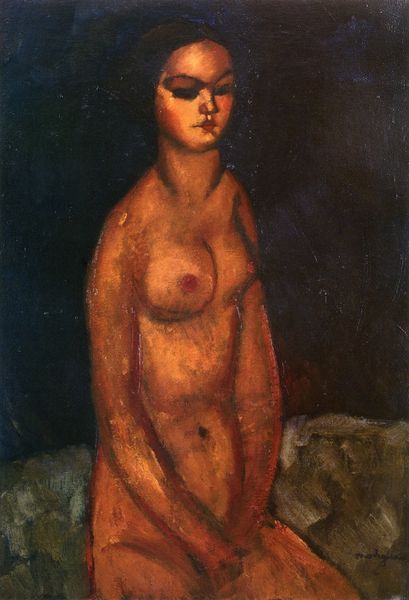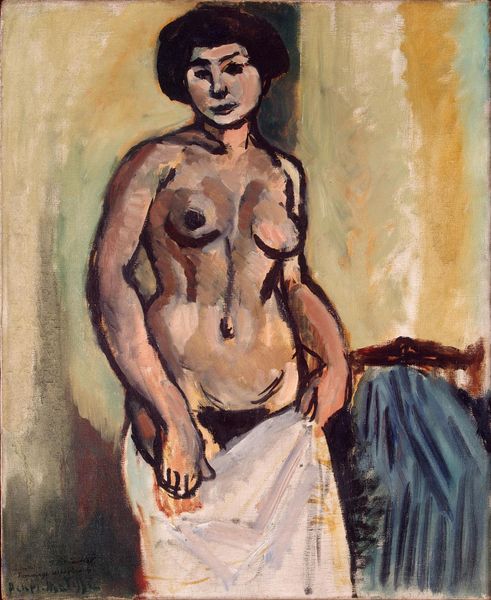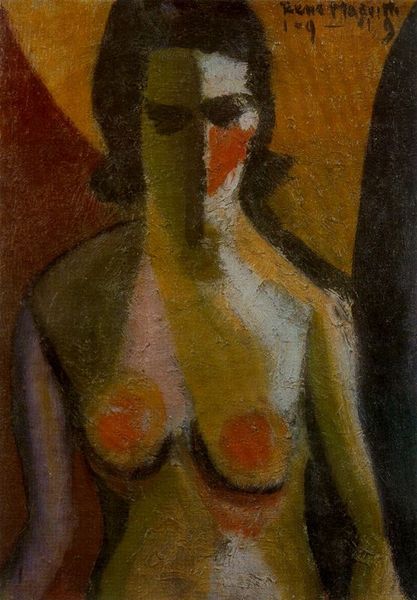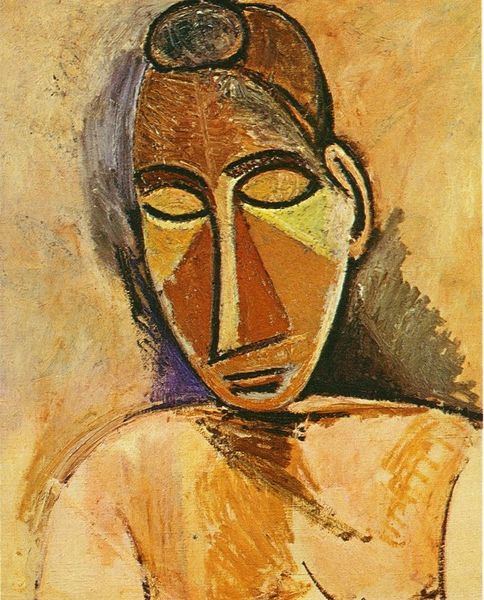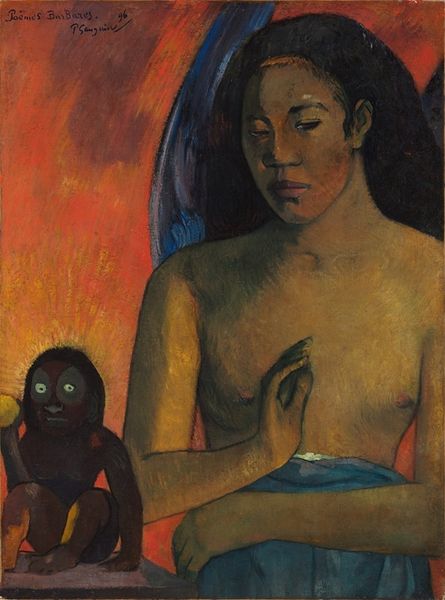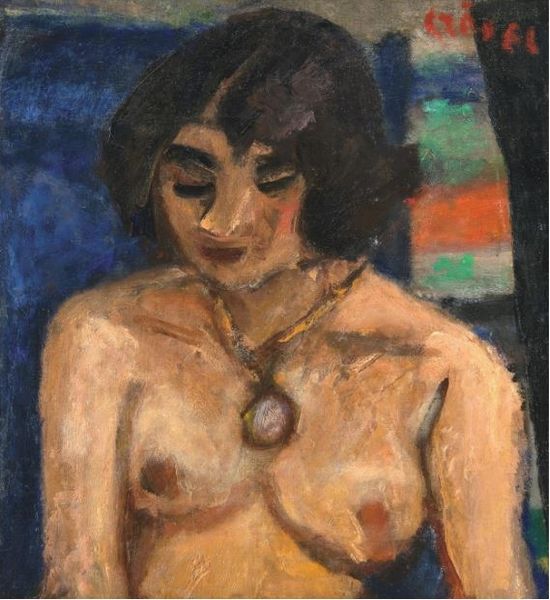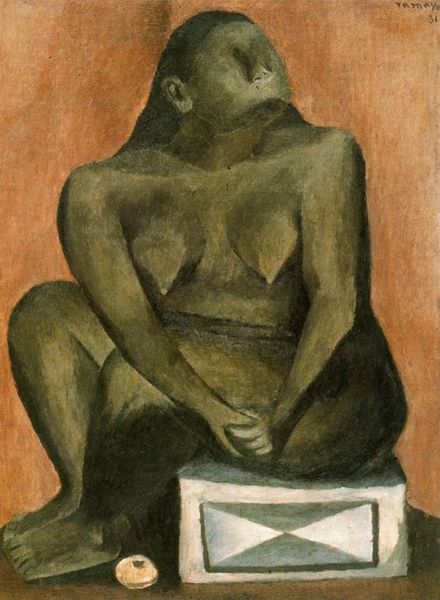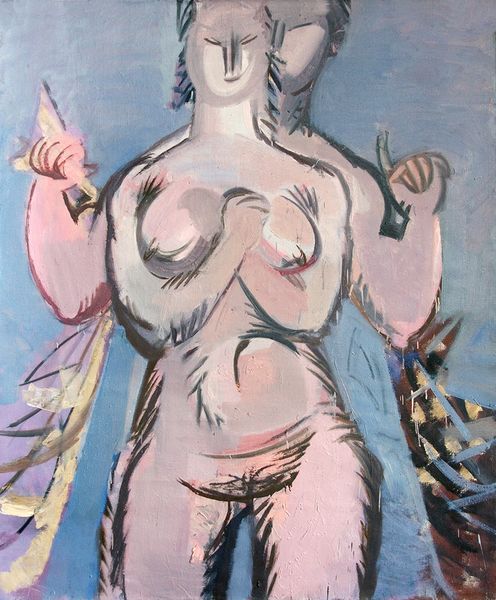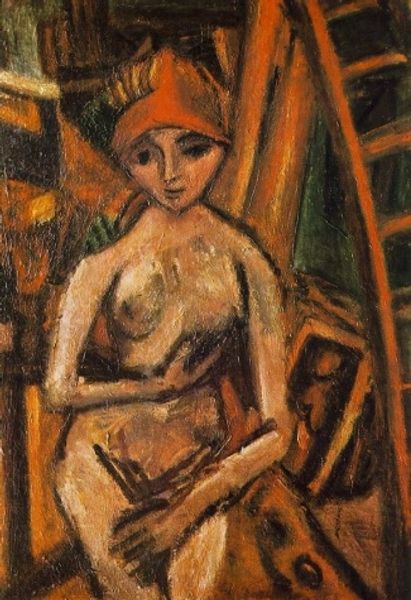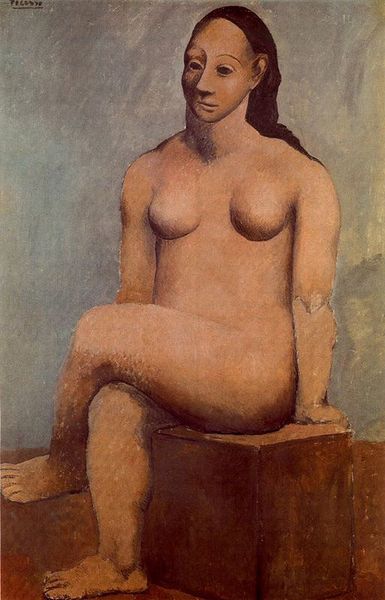
painting, oil-paint
#
portrait
#
cubism
#
art-nouveau
#
painting
#
oil-paint
#
oil painting
#
female-nude
#
expressionism
#
nude
#
portrait art
Copyright: Public domain US
Curator: This is "Bust of nude woman," an oil painting executed by Pablo Picasso in 1906. The work exemplifies Picasso's engagement with both Art Nouveau and burgeoning Cubist sensibilities in his early period. Editor: The color palette really stands out. It feels earthy, almost like the subject is emerging from the clay itself. Curator: That earthiness isn't accidental. 1906 was a key transitional year for Picasso, marked by explorations into Iberian sculpture and primitive art. He began to strip down conventional aesthetics to reveal more fundamental forms. This shift reflected broader European intellectual and artistic currents, a rejection of academic traditions towards simpler, rawer means of expression. Editor: I’m fascinated by the layering and how the application of paint itself builds texture. You can practically feel the labor in the making, see the artist working through it. Is there much known about his studio practice then? Curator: Records indicate a highly active and experimental studio during this period, where Picasso would have relentlessly reworked his canvases. This fits within the broader avant-garde movement that valued artistic process and direct engagement with the medium over mere pictorial illusionism. This painting, initially shocking to the mainstream, came to signify radical aesthetic ideas challenging traditional museum practices and canons. Editor: Considering the brushstrokes and the almost sculpted feel of the paint, I'm thinking about how the 'high' art of painting met the labor-intensive, material processes typically assigned to 'craft' like sculpting with clay. The texture fights against a smooth, idealized representation of the nude, bringing out the physicality of both the subject and the making of the artwork. Curator: Precisely, these subversions are precisely what made Picasso’s work controversial yet highly influential at the time. It disrupted not just artistic techniques but also deeply held socio-cultural assumptions about beauty and representation within early 20th-century society. Editor: Looking closer, I noticed subtle shades mixed into her skin tone. Each application suggests deliberate action, a push to find substance beyond the immediate surface, not unlike how social conditions imprint upon a subject. Curator: Indeed, looking back now, Picasso's work in 1906 opened paths to challenge norms and invited greater engagement in the ongoing cultural conversation about modern art. Editor: And considering those rough strokes and the focus on materiality, I will always have new questions about labor, artistic production, and the inherent value in both seeing and creating the piece itself.
Comments
No comments
Be the first to comment and join the conversation on the ultimate creative platform.
